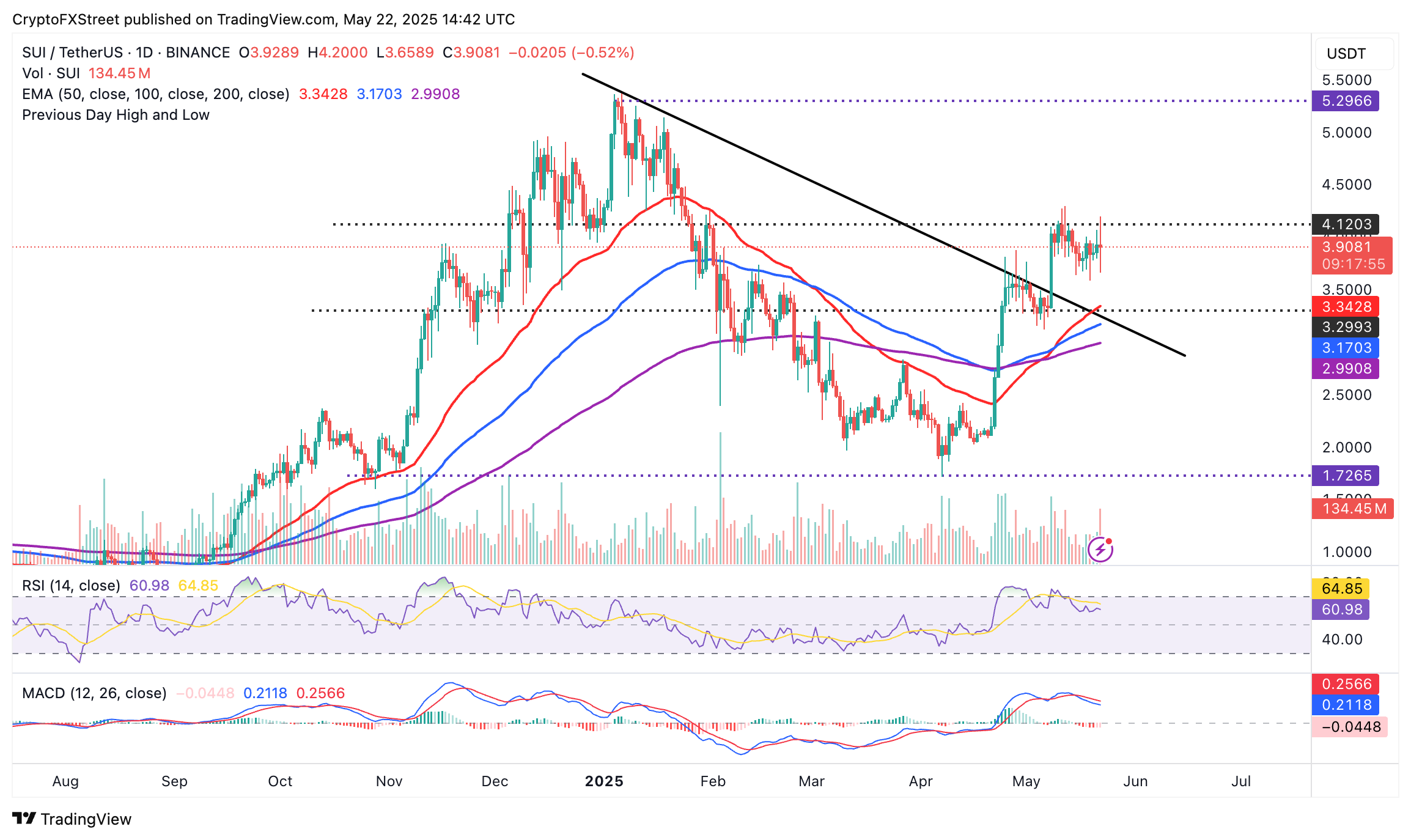Sui's bullish momentum at risk as leading liquidity provider Cetus suffers a $220 million hack
- Sui's recovery is in jeopardy after Cetus, the largest liquidity provider in the ecosystem, reported a $220 million hack.
- Cetus has paused smart contracts and suspended trading ahead of a preliminary investigation and a detailed statement.
- Early reports suggest the attacker used fake tokens like BULLA to exploit flawed price curves and reserve calculations.
Sui's (SUI) over 60% surge in the last 30 days hangs in the balance after the protocol announced a hack attack on its largest liquidity provider, Cetus. The smart contracts token has reversed the gains on Thursday, down slightly on the day to $3.81 at the time of writing.
Sui's liquidity provider Cetus halts trading following $220M exploit
Sui's recent recovery could be in jeopardy after Cetus, the largest liquidity provider in the ecosystem, reported a massive $220 million hack. The Decentralized Exchange (DEX) acted swiftly, pausing its smart contracts and suspending trading as it geared up for a preliminary investigation into the matter, with a detailed report expected soon.
Cetus reported the incident on Thursday and said the "team is investigating the incident at the moment."
Early reports indicate that the exploiter took advantage of vulnerabilities and utilized fake tokens such as BULLA and MOJO to manipulate flawed price curves and reserve calculations, effectively draining liquidity pools.
This led to a catastrophic loss of over $220 million in assets, with trading on the platform stopping. Tokens tied to Cetus' liquidity pools, including its native CETUS token, were hit hard. CETUS plummeted 40% in the aftermath.
Sui quickly responded to the exploit, promising to extend support to the Cetus team to ensure a speedy and thorough investigation.
"The Cetus team has our active support in this ongoing investigation and will provide further updates as soon as they become available," Sui said in a statement posted on X.
Sui's uptrend stumbles as investors weigh exploit's impact on the ecosystem
Before the hack on Cetus, Sui had sustained gains exceeding 60% in the past 60 days, reflecting strong sentiment in the broader cryptocurrency market. The token hit highs around $4.29 on May 12 following a steady recovery from the April 7 tariff-triggered crash around $1.72.
If volatility surges as traders digest the wider implications of the exploit on Cetus, declines could accelerate, reflecting a sell signal from the Moving Average Convergence Divergence (MACD) indicator on the daily chart below.
This signal occurs when the MACD line (blue) crosses below the signal line (red). Expanding red histogram bars beneath the center line also affirm the bearish momentum.
Key monitoring levels on the downside include the 50-day Exponential Moving Average (EMA) at around $3.34, the 100-day EMA near $3.17 and the 200-day EMA at $2.99.

SUI/USDT daily chart
However, the Relative Strength Index (RSI) relatively sideways movement at 62 suggests that the uptrend still has strength and could resume, targeting gains beyond the seller congestion at $4.00. Traders would look for the RSI's potential move toward the overbought region (above 70) to ascertain the uptrend's strength.
Cryptocurrency prices FAQs
Token launches influence demand and adoption among market participants. Listings on crypto exchanges deepen the liquidity for an asset and add new participants to an asset’s network. This is typically bullish for a digital asset.
A hack is an event in which an attacker captures a large volume of the asset from a DeFi bridge or hot wallet of an exchange or any other crypto platform via exploits, bugs or other methods. The exploiter then transfers these tokens out of the exchange platforms to ultimately sell or swap the assets for other cryptocurrencies or stablecoins. Such events often involve an en masse panic triggering a sell-off in the affected assets.
Macroeconomic events like the US Federal Reserve’s decision on interest rates influence crypto assets mainly through the direct impact they have on the US Dollar. An increase in interest rate typically negatively influences Bitcoin and altcoin prices, and vice versa. If the US Dollar index declines, risk assets and associated leverage for trading gets cheaper, in turn driving crypto prices higher.
Halvings are typically considered bullish events as they slash the block reward in half for miners, constricting the supply of the asset. At consistent demand if the supply reduces, the asset’s price climbs.



